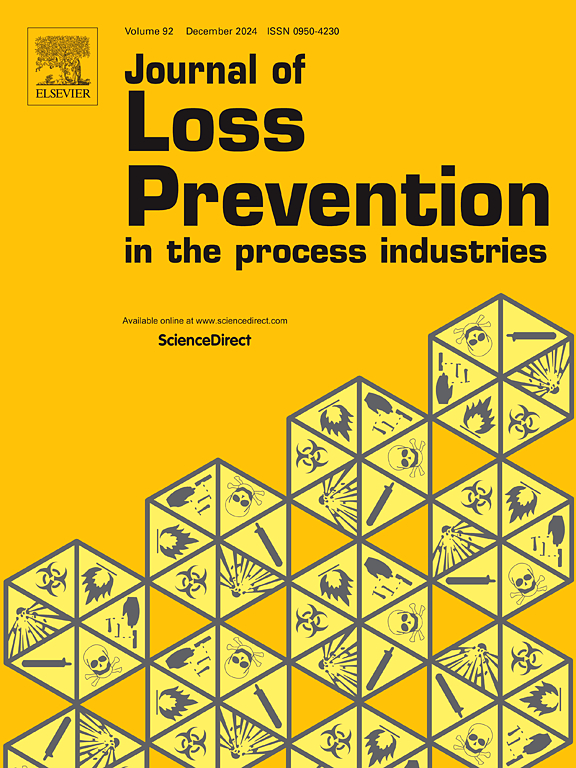Probabilistic risk assessment of VCE for chemical equipment, case study: Storage and transportation process of N-decane
IF 3.6
3区 工程技术
Q2 ENGINEERING, CHEMICAL
Journal of Loss Prevention in The Process Industries
Pub Date : 2025-01-06
DOI:10.1016/j.jlp.2025.105548
引用次数: 0
Abstract
Hazardous chemical storage, transport and refining enterprises involve significant quantities of toxic and harmful hazardous materials. These hazardous substances can lead to a series of accidents when they encounter ignition sources or undergo uncontrolled reactions. Such accidents involve various types of equipment and pipelines, potentially resulting in serious consequences, thus, the associated risks should not be overlooked. Consequently, a quantitative risk assessment of the N-decane storage and transportation process in an industrial area in Tianjin was conducted. Firstly, the types of equipment, along with their working pressures, are introduced. The likelihood of VCE resulting from leakage is determined based on the OGP database and delayed ignition probability model. Secondly, based on the numerical simulation and the experimental testing method, the diffusion and explosion characteristics of N-decane liquid mist are investigated, and the fitted curves of explosion overpressure on the pneumatic pressures are obtained, which, when combined with the injury probability model, allow for the determination of potential consequences. Finally, by integrating the VCE probability of equipment and their consequences with a risk classification matrix, a probabilistic risk assessment model is established. This model serves as a reference for the risk assessment system of other process units and equipment within the chemical industry.
求助全文
约1分钟内获得全文
求助全文
来源期刊
CiteScore
7.20
自引率
14.30%
发文量
226
审稿时长
52 days
期刊介绍:
The broad scope of the journal is process safety. Process safety is defined as the prevention and mitigation of process-related injuries and damage arising from process incidents involving fire, explosion and toxic release. Such undesired events occur in the process industries during the use, storage, manufacture, handling, and transportation of highly hazardous chemicals.

 求助内容:
求助内容: 应助结果提醒方式:
应助结果提醒方式:


